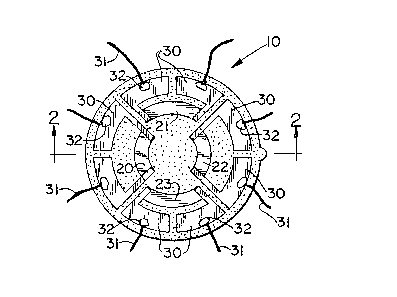Some of the information on this Web page has been provided by external sources. The Government of Canada is not responsible for the accuracy, reliability or currency of the information supplied by external sources. Users wishing to rely upon this information should consult directly with the source of the information. Content provided by external sources is not subject to official languages, privacy and accessibility requirements.
Any discrepancies in the text and image of the Claims and Abstract are due to differing posting times. Text of the Claims and Abstract are posted:
| (12) Patent: | (11) CA 1313060 |
|---|---|
| (21) Application Number: | 1313060 |
| (54) English Title: | PRESSURE TRANSDUCER WITH CONDUCTIVE POLYMER BRIDGE |
| (54) French Title: | TRANSDUCTEUR DE PRESSION AVEC PONT POLYMERIQUE CONDUCTEUR |
| Status: | Expired and beyond the Period of Reversal |
| (51) International Patent Classification (IPC): |
|
|---|---|
| (72) Inventors : |
|
| (73) Owners : |
|
| (71) Applicants : |
|
| (74) Agent: | MACRAE & CO. |
| (74) Associate agent: | |
| (45) Issued: | 1993-01-26 |
| (22) Filed Date: | 1988-11-25 |
| Availability of licence: | N/A |
| Dedicated to the Public: | N/A |
| (25) Language of filing: | English |
| Patent Cooperation Treaty (PCT): | No |
|---|
| (30) Application Priority Data: | ||||||
|---|---|---|---|---|---|---|
|
Abstract of the Disclosure
A pressure transducer is produced by molding a
diaphragm from a high temperature thermoplastic. The diaphragm
is molded in a cup shape having thick edges and a thin,
flexible central portion onto which the strain gauge is to be
formed. A Wheatstone bridge of conductive polymers is screen
printed onto the surface of the thin central diaphragm of the
molded element. The conductive polymers can be trimmed to a
desired resistance value using a Nd-YAG laser or abrasive-type
trimmers. The conductive polymers are baked onto the substrate
and metal conductors are printed on the surface of the
substrate at the ends of the resistor elements. These metal
conductors are connected by a conductive epoxy to lead wires by
which the sensor is connected into its monitoring circuit.
Note: Claims are shown in the official language in which they were submitted.
Note: Descriptions are shown in the official language in which they were submitted.

2024-08-01:As part of the Next Generation Patents (NGP) transition, the Canadian Patents Database (CPD) now contains a more detailed Event History, which replicates the Event Log of our new back-office solution.
Please note that "Inactive:" events refers to events no longer in use in our new back-office solution.
For a clearer understanding of the status of the application/patent presented on this page, the site Disclaimer , as well as the definitions for Patent , Event History , Maintenance Fee and Payment History should be consulted.
| Description | Date |
|---|---|
| Inactive: IPC from MCD | 2006-03-11 |
| Inactive: IPC from MCD | 2006-03-11 |
| Time Limit for Reversal Expired | 1998-01-26 |
| Letter Sent | 1997-01-27 |
| Grant by Issuance | 1993-01-26 |
There is no abandonment history.
Note: Records showing the ownership history in alphabetical order.
| Current Owners on Record |
|---|
| MEDEX, INC. |
| Past Owners on Record |
|---|
| THOMAS P. FRANK |